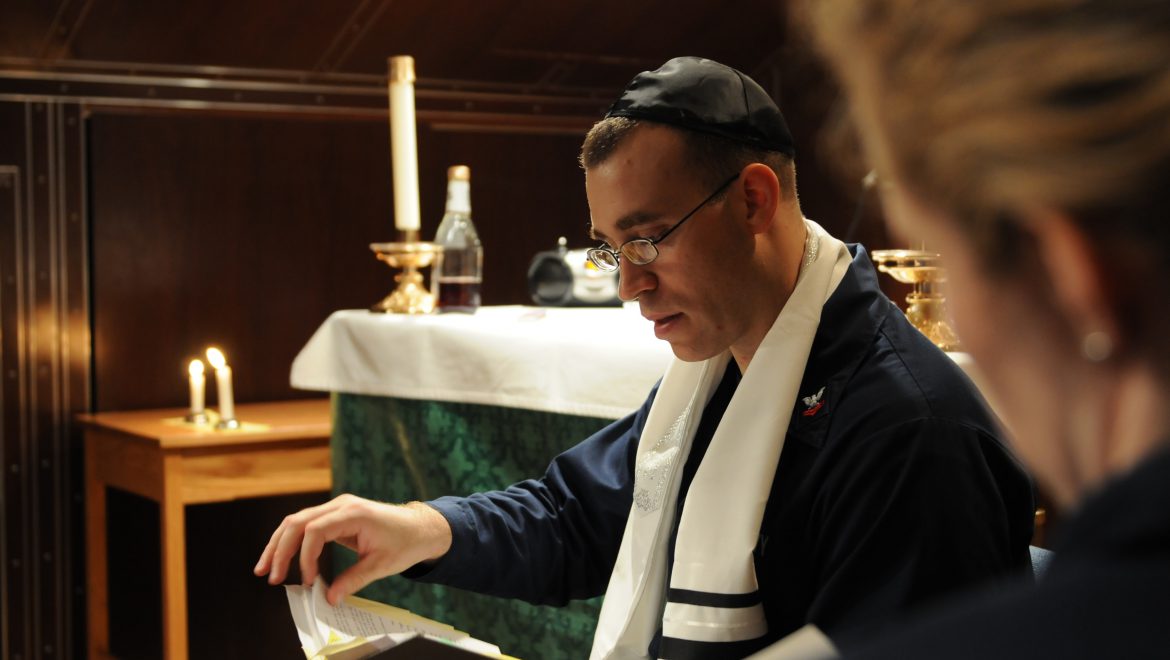
This article by Rabbi Wendi Geffen answers basic questions about the evening and morning Shabbat services in Reform Congregations, such as whether or not there will be music and what people may be wearing. This is a helpful resource for someone who is planning on attending a Reform Synagogue on Shabbat for the first time. Rabbi Wendi Geffen, the assistant rabbi of North Shore Congregation Israel in Glencoe, IL, shared this article on ReformJudaism.org, the official website of the Reform Movement.
What to Expect at a Reform Shabbat Service
Shabbat, the Jewish Sabbath (Day of Rest), begins on Friday evening and concludes on Saturday evening. It is a weekly time (traditionally 25 hours) set apart to focus on what really matters: gratitude for our lives and our communities, and for the growth of the spirit. An important part of that is the opportunity to pray, sing, meditate, and learn together as a community in Shabbat services. Services take place on Friday evenings and Saturday mornings, and sometimes Saturday afternoons and evenings, culminating in a Havdalah service which marks the end of Shabbat.
So, before delving into what to expect, you should know there will be much variation in timing, style, worship content, attire, and even participation level, based not only on the day you attend services, but also on the part of the country or world where you are, and the synagogue and service you attend. That said, here are general guidelines of what you can expect at a Reform Shabbat service:
1) Where will Shabbat services be held?
Shabbat services will take place in a space that is designated, either permanently or temporarily, as a prayer space. This may be an indoor or outdoor space, where the chairs will be arranged in a way that keep participants in close proximity to one another. These spaces are usually arranged theater-style or in the round. There may be a bimah (a raised area) or podium to designate where the service leader(s) will lead the service. Generally speaking, seating is open and worshippers can sit where they’d like.
2) What will people wear?
Often, people “dress up” for Shabbat services, wearing business casual or business formal. It is best to contact the synagogue or organization hosting the service to ask if there is any specific dress code. During services you may see some people wearing head coverings (Hebrew: kippah; Yiddish: yarmulke) and/or a prayer shawl (Hebrew: tallit; Yiddish: tallis). The Reform movement is egalitarian, so both men and women can wear whatever ritual attire they please if they choose to do so. That said, you may also see people not wearing any ritual attire.
3) Is there a prayer book?
Every congregation will have a siddur (prayer book) for each worshipper to use during services. Most Reform congregations now use a siddur called Mishkan T’filah. It contains traditional prayers in Hebrew, English phonetic transliterations, as well as literal translations and interpretive readings based on traditional prayer themes. Most likely, throughout the service, the rabbi, cantor, or service leader announce page numbers so worshippers can follow along.
4) Will there be music?
Yes! Shabbat services always include a wide variety of music and singing. In some communities, music will be vocals-only, others may include musical instruments. Many congregations will have a cantor, cantorial-soloist, or song-leader, and some congregations may even have a choir.
5) What are the prayers like on Shabbat?
The Shabbat liturgy includes special prayers that stress the importance and lessons of Shabbat, highlighting the themes of God’s creation of the world and God’s redemption of the Jewish people from Egypt. Since Shabbat is a day of rest not just for people, but for God, Shabbat prayers generally do not include requests of God, but rather, praise for God.
Shabbat is also a day on which we read from the Torah. Some communities do this on Friday night, although most do so on Saturday morning. A central part of the Shabbat morning service is known as Seder K’riat HaTorah (Service for the Reading of Torah), and contains special prayers and songs that highlight the importance of Torah. Depending on the congregation, there may be many Torah readers, usually ranging from one reader up to eight. The Torah is kept in a special place called an Aron HaKodesh (Ark) and is dressed in “attire” that mimics the garb of the ancient priests. When the Torah is brought out of the Ark, the congregation rises, and does not sit until the Torah is undressed and ready to be read. Each week, Jews around the world read from the same parashah (portion) of Torah, making the Torah reading one of the key unifiers of time and message in the entire Jewish world.
6) Will there be a sermon?
It is likely that at some point during the service, a rabbi or lay leader will either deliver a sermon or d’var Torah (message about that week’s Torah portion) to offer a Jewish idea or teaching as a meaningful application to broader life. Sometimes there will be an interactive discussion when group participation is encouraged.

